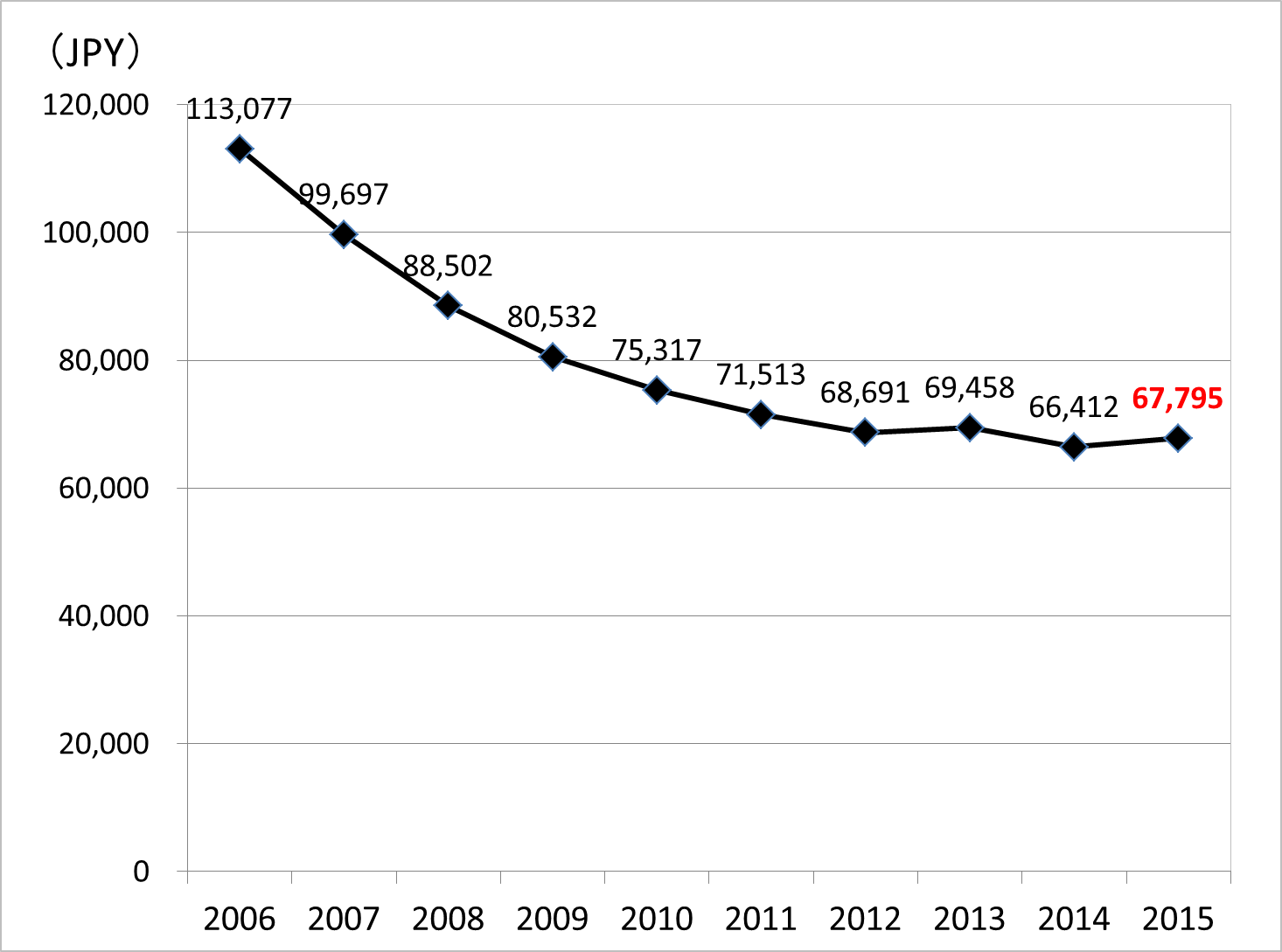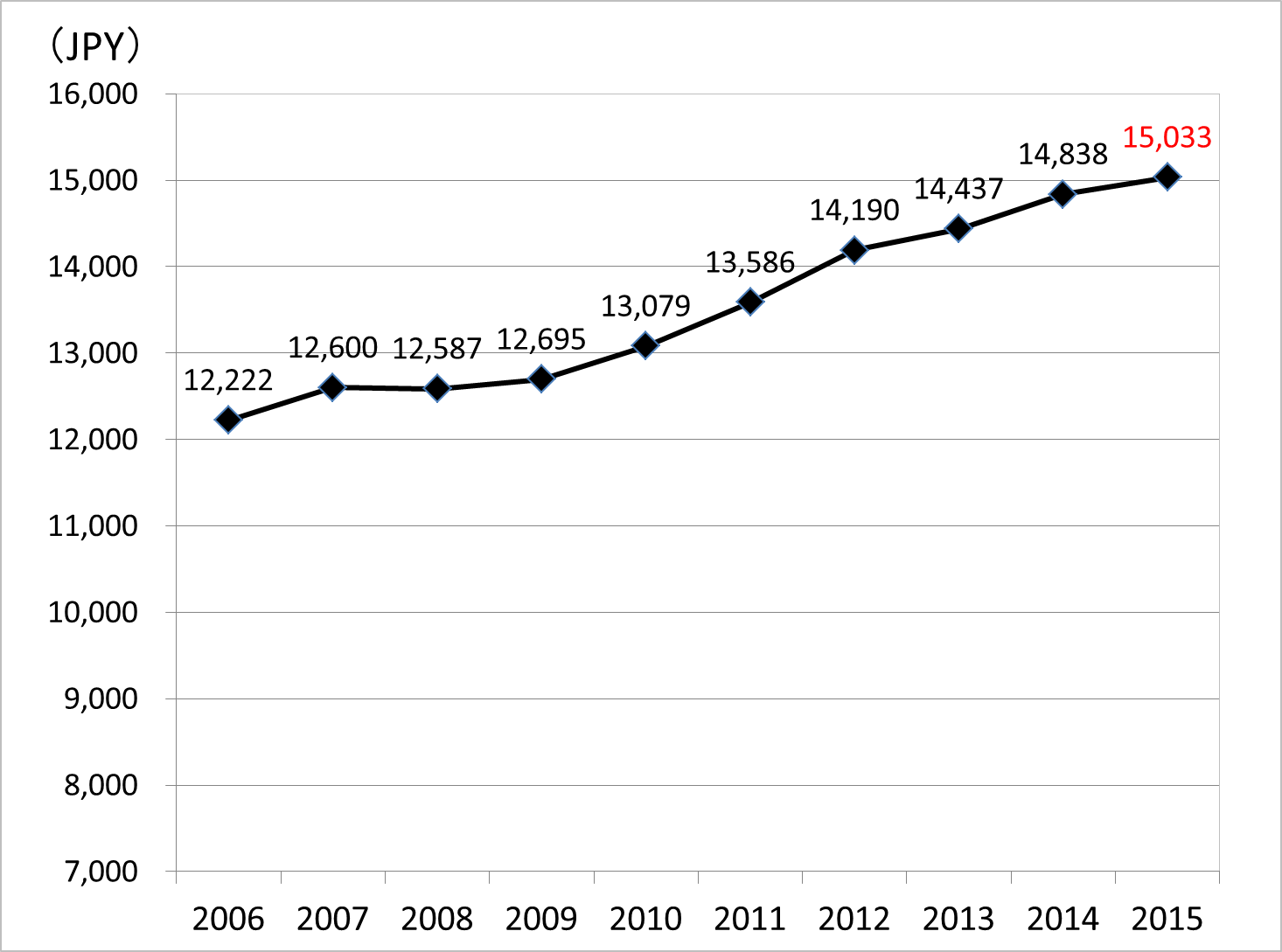Column Finance and the Social Security System 2018.02.28
【Aging, safety net and fiscal crisis in Japan】No.44: Working Continuation Support for Disabled People and the Social Welfare Corporation
The employment of disabled people mentioned in Column No. 43 enables disabled employees to work in private companies and public organizations with employment contracts equivalent to those of non-disabled people. Apart from these opportunities, there is a program involving a welfare business that aims to support the continued employment of disabled people. These can be either Type A or Type B.
Type A targets disabled workers who are capable of working based on employment contracts but who may have difficulty working in regular business setting. Training programs to improve occupational abilities are also offered to these workers. Based on employment contracts, they can earn minimum wage or more. As shown in Figure 1, the average wage per month for workers in Type A organizations was JPY 67,795 (US$ 616: US$ 1=JPY 110) in 2015. In other words, the hourly wage was JPY 769 (US$ 7), and there was an average of 88 working hours per month.
Type B provides opportunities for disabled workers who have difficulty with work that is based on employment contracts. The money paid to these workers is called a fee rather than a wage. As shown in Figure 2, the average fee per month for workers in Type B organizations was JPY 15,033 (US$ 137) in 2015. In other words, the hourly fee was JPY 193 (US$ 1.75), and there was an average of 78 working hours per month.
As of March 2017, the total number of type A and type B establishments was 14,320, and the number of people with disabilities working there was 290,016. A common problem is that it is difficult for these disabled workers to live independently when earning such a small amount of money, which may be inevitable because of reduced working hours. Among type A and type B business owners, however, are many social welfare corporations that operate facilities for the disabled.
As mentioned in Column No. 17, the average operating margin of social welfare corporations with facilities for the disabled was 6.6% in 2015. This is higher than the average for private companies in Japan (4.8% in 2015, 5.2% in 2016). Therefore, social welfare corporations appear to enjoy a kind of financial reimbursement as a result of employing people with disabilities in type A and type B settings.

(Source)Ministry of Health, Labor and Welfare

